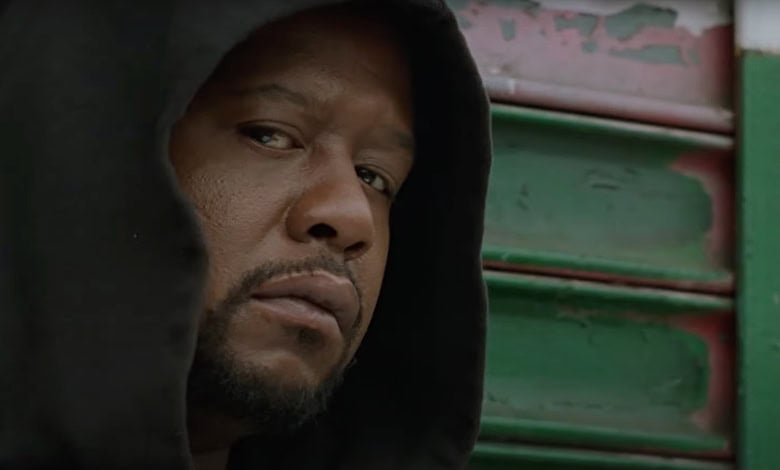
Jim Jarmusch’s “Ghost Dog – The Way of the Samurai” (2000) shouldn’t work at all.
Here is a hybrid hitman thriller, neighborhood drama, character comedy, gangster saga and code of honor meditation. It somehow manages to be droll yet thrilling, funny yet somber. It’s easily Jarmusch’s best film, though hardly the only time he made personal, tonally ambitious and wildly quirky films that are hard to categorize but easy to like.
The setting is New Jersey, where a dysfunctional crime family is a known neighborhood nuisance. There are kind citizens milling around, such as Pearline (Camille Winbush), a young girl who is always reading and Raymond (Isaach de Bankolé), an ice cream man who always offers a smile.
Under the surface, there are reports of a public servant, a folk hero, killer for hire and secret warrior known only as Ghost Dog.
Forest Whitaker is the title character, an assassin for hire and local legend, but that makes the role sound like you’ve seen this before. Ghost Dog isn’t John Wick, though the character is comparatively unknowable, has a background rich in pathos and has a strict moral code.
Like Wick, you sense that Ghost Dog feels angst about his profession but is still better at it than anyone else.
Jim Jarmusch and Forest Whitaker (reading Rashomon) on set of GHOST DOG: THE WAY OF THE SAMURAI pic.twitter.com/2mI94VjH3p
— Janus Films (@janusfilms) December 18, 2024
At this point, Jarmusch was celebrated for his “Stranger Than Paradise” (1984), “Down By Law” (1986), “Night on Earth” (1991) and “Dead Man” (1995), to name just a few. Along comes this audacious blend of mobster crime drama, slice-of-life comedy, samurai actioner, hitman meditation and revenge saga.
Jarmusch’s film is soulful, kind of nuts and utterly hypnotic. This latter quality is somewhat due to the pull of the story, the astonishing ease of the tonal shifts and especially in the banger of a soundtrack from The RZA.
“Ghost Dog – The Way of the Samurai” isn’t quite Blaxploitation (though one scene in the third act suggests Jarmusch is conscious of Ghost Dog being akin to “Superfly”- more on that later). The character reminds me of Obi-Wan Kenobi fused with Toshiro Mifune – the blend of kindness and danger is unmistakable.
What I’m trying to say is that this is a seriously cool character and Whitaker is fantastic in this.
A final aspect that Ghost Dog has in common with John Wick: they both care for an animal that meets a sad end from stupid criminals. Like the outcome of Wick’s dog (sorry for the minor spoilers), what happens to Ghost Dog tells us plainly that the antagonists simply must die.
FAST FACT: RZA announced a “Ghost Dog” sequel was in the works in 2017, but two years later, the project switched to the small screen. There’s been little discussion of it since then.
Whitaker is tall and intimidating but can convey either a stone-cold disposition or bare compassion. Perhaps the easiest comparison, in that the character is both dangerous and whimsical, is to Shintaro Katsu’s performances in the “Zatoichi” film series. The title character is a blind swordsman who will greet you with a smile and a friendly demeanor, until you cross him and out comes the swish of the sword hidden in his cane.
Yes, the lovable 1990 Rutger Hauer vehicle, “Blind Fury,” is a remake of “Zatoichi.”
As a filmmaker, Jarmusch only seems to be presenting this story in his signature detached cool, but the ease of the pacing masks how complex this is. The overlapping imagery, “Hagakure” recitations/ chapter stops, and daily anecdotes lean into the poetry of Ghost Dog’s odd lifestyle. While the overall result defines “offbeat,” this is still more exciting than most art films I can think of.
The montage of Ghost Dog practicing his swordplay, working out to a pounding RZA track, is as thrilling as any similar sequence in a “Rocky” or “Karate Kid” film.
A late scene where Ghost Dog outmatches two bear-killing rednecks is the sole note where Jarmusch leans heavily into the influence of Melvin Van Peebles’ “Sweet Sweetback’s Baadasssss Song” (1971). The scene works, but the movie doesn’t need it.
The film is a study in contrasts and that goes beyond the tonal mixing. “Ghost Dog – The Way of the Samurai” is genre defiant in the best way, as weird and hip as “The Adventures of Buckaroo Banzai: Across the 8th Dimension” (1984).
It plays like a kind of weird college mixtape of mismatched and unexpected wonders. Whenever you feel at ease with the genre expectations being established, Jarmusch hits you with another quirky character detail or surprise that keeps us guessing as to where it’s all going.
I love Jarmusch’s films, but this one is my favorite, and it gets better with repeat viewings. Considering the ode to revenge dramas, Japanese action films and the story of reinvention at the center, Jarmusch’s film actually plays like a prelude to (if not an all-out cinematic cousin) to Quentin Tarantino’s “Kill Bill” films (2003-2004).
Jarmusch ends his masterpiece with a placeholder for a sequel, with Pearline providing an ongoing link. I say, bring it.
